From castles to country houses and even abbeys and priories, the Lake District is crammed full of historic buildings and picturesque ruins all of which have played their role in British history from Norman times through to Henry VIII and Elizabeth I right through to the modern era.
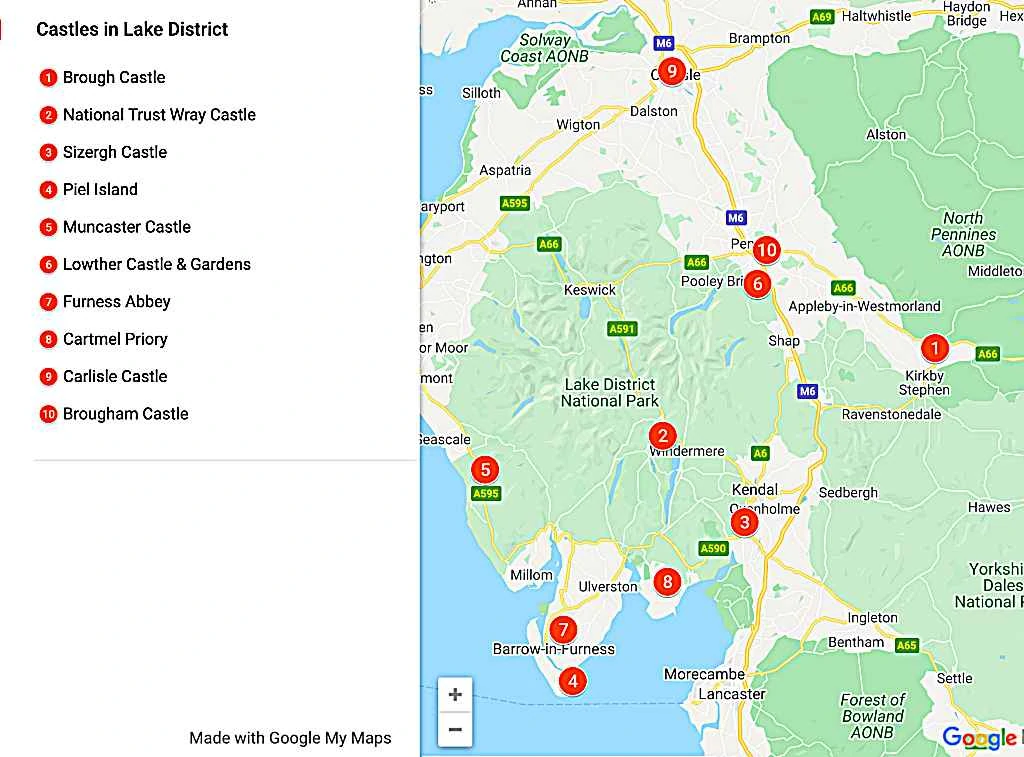
10 Amazing Castles to Visit in Lake District
1. Brough Castle
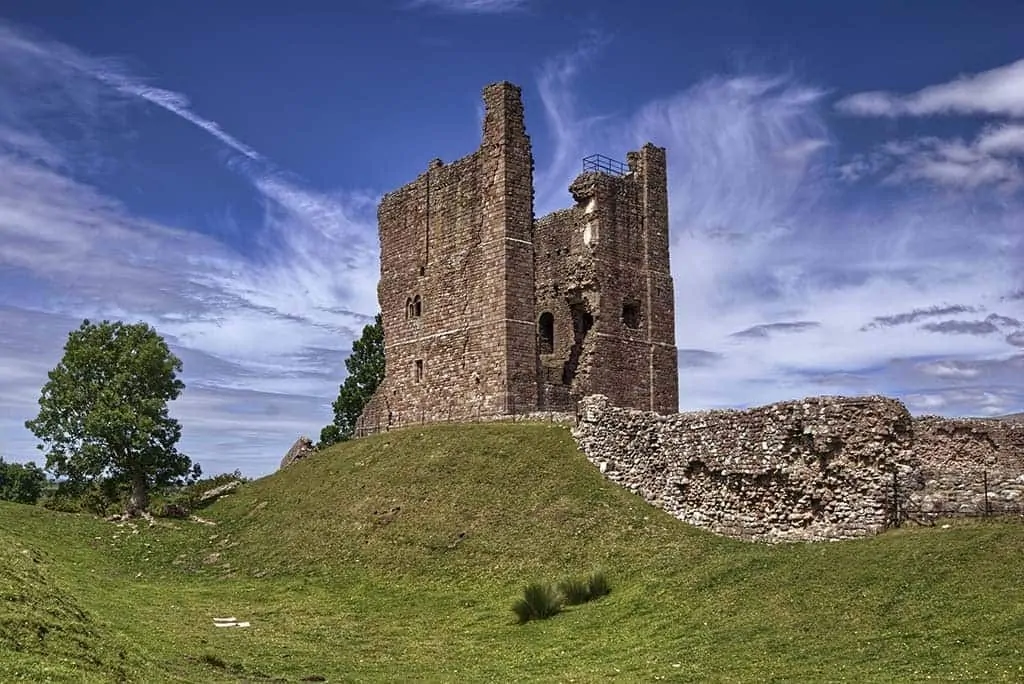
Built as an earth and timber motte and bailey castle on the site of a Roman fort by William Rufus sometime around 1092 to protect a key route through the Pennines, Brough Castle was rebuilt in stone during the 12th century closely reflecting the shape of the original castle.
Belonging to the Clifford Family from 1268, the castle withstood attacks from the Scots multiple times, finally being confiscated from the Clifford’s during the Wars of the Roses before coming back into the family by way of Lady Anne Clifford in the 17th century who renovated the ruin to create a family home. Today the castle stands in ruin once more with the tower the best surviving part.
Where: Brough, Cumbria
When: 11th century
Open for visit: Yes, check here for more information.
2. Wray Castle
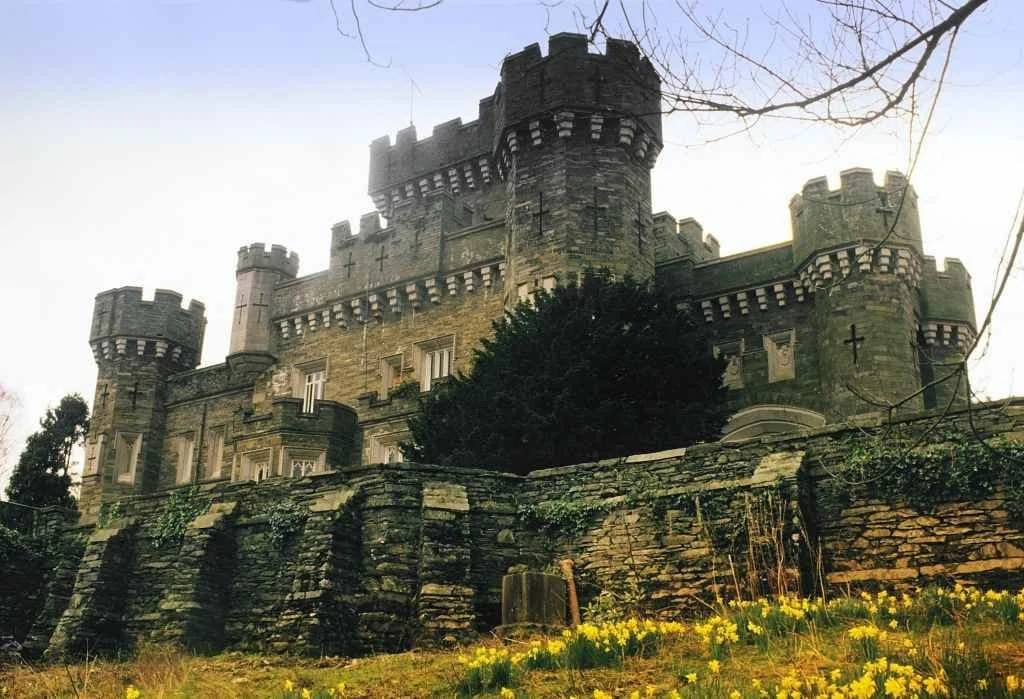
Located on the shores of picturesque Lake Windermere, this 180 – year – old castle was built as a country house (rather than a stronghold) by Dr James Dawson, a leading Liverpool surgeon, in 1840.
Today, visitors can take a guided tour around the mansion as well as explore the beautiful grounds with walking trails, along with the Peter Rabbit Adventure Rooms, this castle visited by Beatrix Potter as a child on holiday.
Where: Claife, Cumbria
When: 19th century
Open for visit: Yes, check here for more information.
Check out: The best castles in England.
3. Sizergh Castle
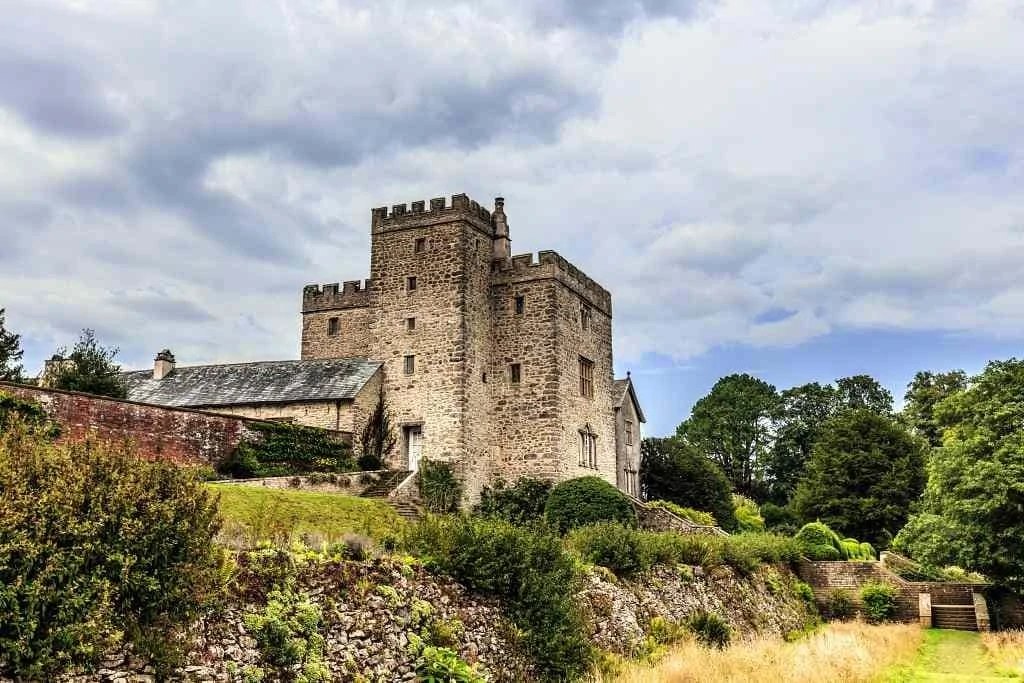
This stately home and garden set on a 1,600 acres estate has been the home of the Hornyold-Strickland family for 760 years. Originally known as Sizergh Hall, the so-called castle (country estate) was enlarged in the 16th century and again in the 18th century and today contains some of the finest examples of Elizabethan carved over-mantels in England along with the 14th-century solar tower, 15th-century great hall, the famous Inlaid Chamber which was once on display at the V&A Museum in London.
Where: Helsington, Cumbria
When: 14th century
Open for visit: Yes, check here for more information.
4. Piel Island

This castle, also known as Fouldry Castle, was built on Piel Island which is located half a mile off the coast of the Furness Peninsula by John Cockerham, the Abbot of Furness to protect against Scottish raids on the already existing valuable and vulnerable Furness Abbey.
Later, in 1534 Piel Castle was dissolved by Henry VIII, it being part of the estate of the richest Cistercian monastery in England. Standing in ruin today, visitors can see what remains of the Keep, curtain wall with corner towers, and inner and outer baileys.
Where: Walney, Barrow-in-Furness, Piel Island
When: 14th century
Open for visit: Yes, open dawn-dusk but only accessible via a small ferry Check here for more information.
5. Muncaster Castle

A property has stood here since as early as 1185, Muncaster Castle originally being a Pele Tower and Hall House belonging to the Pennington family whose ancestors live in the current castle today.
Rebuilt during the Tudor period and again in the 18th and 19th centuries, visitors can take an audio tour around the castle’s state rooms learning the history of the family, the castle, and its ghosts! Outside there are 77 acres to explore including beautiful bluebell-filled woods and the magnificent Himalayan Gardens.
Where: Ravenglass, Cumbria
When: 13th century
Style: Medieval / Victorian
Open for visit: Yes. Check website for details and other opening times.
6. Lowther Castle and Gardens
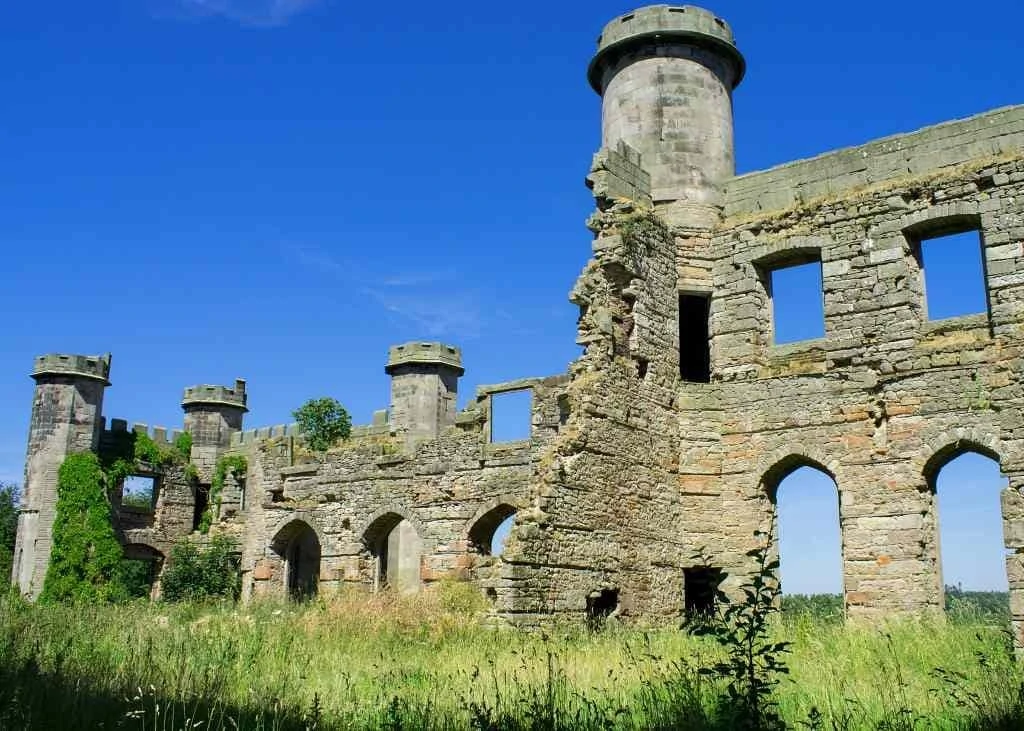
A motte and bailey castle built for Sir Hugh de Lowther once stood on the site of this country home with its exquisite gardens. Home of the Earls of Lonsdale from Medieval times until the 20th century, the architecture of Lowther Castle has a long and turbulent history, the motte and bailey castle replaced by a Pele tower in the 14th century and a Jacobean house replacing the Pele tower in the 17th century.
What we see today comes from 1806 after a fire left the Jacobean residence in ruin, the new house incorporating the old house, but the grandeur of the house short-lived, the castle closing in 1936 due to the extravagant spending of the 5th earl and the castle’s roof removed in 1957 leaving the historic rooms open to the elements for 70 years.
Where: Lowther, Penrith
When: 14th century / 19th century
Open for visit: Yes, check here for more information.
7. Furness Abbey
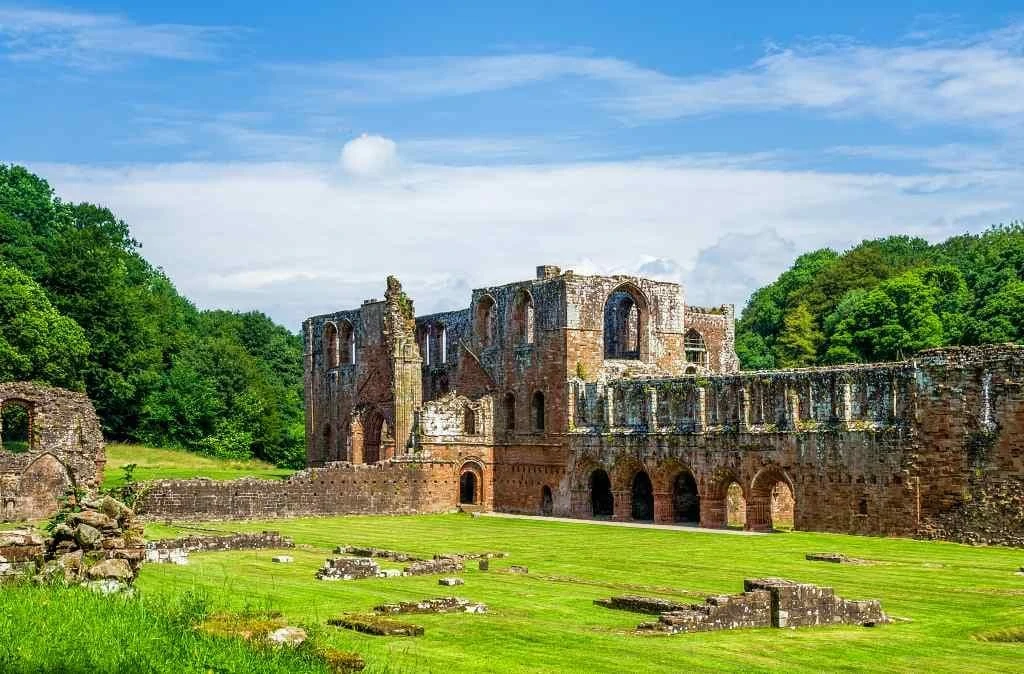
Also known as St. Mary of Furness, the ruins of this former Catholic monastery were founded by Count Stephen of Mortain and Lord of Lancaster in 1125, Stephen going on to become the King of England and the abbey becoming the richest Cistercian monastery in England, second only to Fountains Abbey in Yorkshire.
Today, visitors can walk around the 900 – year – old red sandstone ruins to see what remains of the Precinct and Outer Court, the church with transept and tower, beautiful Cloister Court, the ornate chapter house, as well as dormitory, infirmary, and kitchen.
Where: Barrow-in-Furness, Cumbria
When: 12th century
Open for visit: Yes, check here for more information.
8. Cartmel Priory
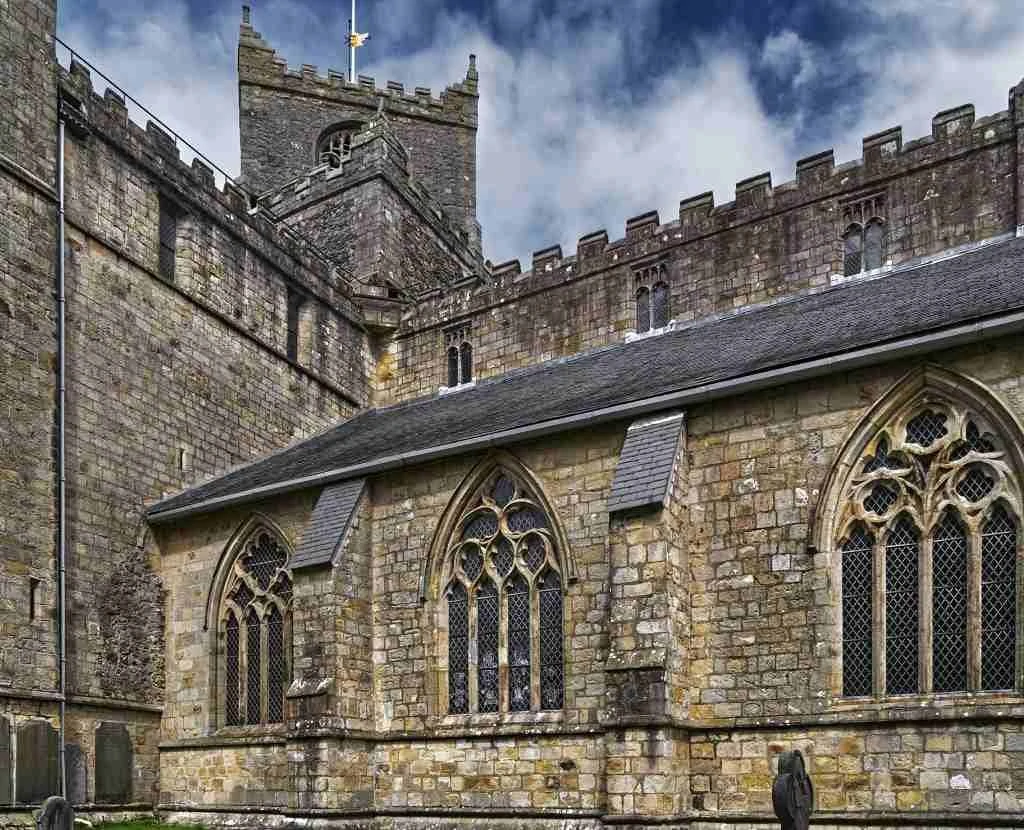
The 1st Earl of Pembroke founded Cartmel Priory in 1189 but it is known that prior to this, right back until 674AD, the monks of Lindisfarne owned the land at Cartmel with a church existing on the site ever since.
Cartmel Priory was one of the few buildings to survive Henry VIII’s 1530’s Dissolution of the Monasteries due to the villagers saying that the priory was their parish church but that didn’t stop the plundering with all assets removed and the lead roof also stripped, the church later used as a prison and a grammar school.
Today, visitors can see 3 periods of architecture with Norman, Decorated, and Perpendicular styles spanning 800 years, the chancel, transepts, and north wall of the nave being the oldest parts of the priory.
Where: Cartmel, Cumbria
When: 12th century
Style: Medieval
Open for visit: Yes, check here for more information.
9. Carlisle Castle

This 900 – year – old Medieval fortress has played a key role in defence over the centuries with the English/Scottish wars and invasions as well as the Civil War and Jacobite Rebellion. Founded by Henry II on the site of a Roman fort, it was here at Carlisle Castle that Elizabeth I held Mary, Queen of Scots captive.
Visitors to Carlisle Castle today can walk through the Medieval interior learning the history of England before visiting the fascinating Cumbria’s Museum of Military Life which is also housed at the castle.
Where: Cumbria
When: 11th century
Open for visit: Yes. Check here for more information.
10. Brougham Castle
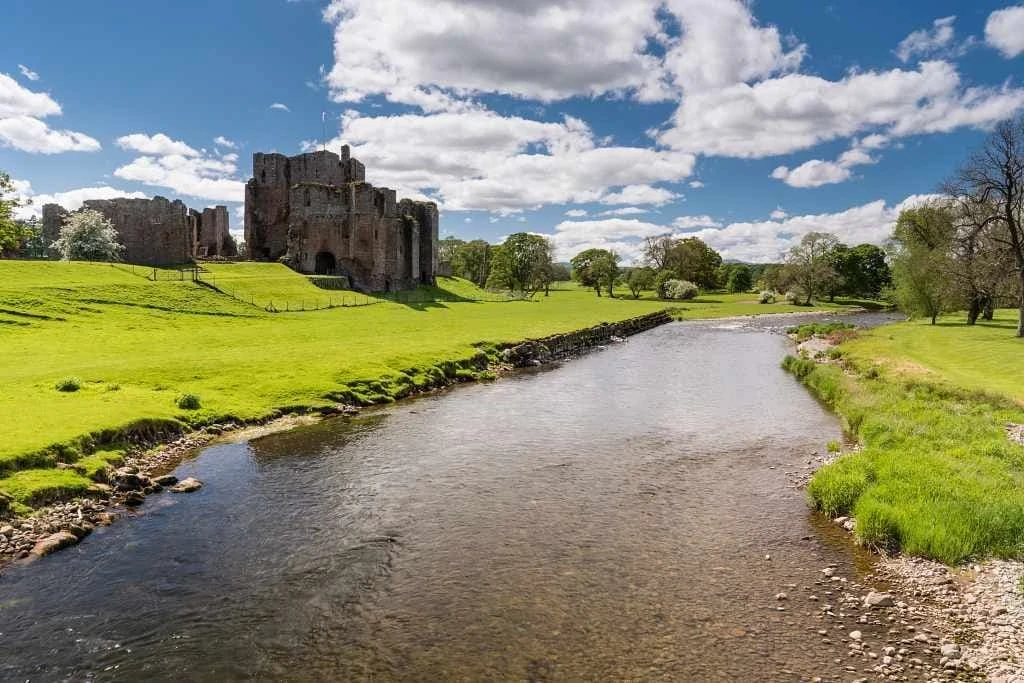
Founded by Robert I de Vieuxpont on the site of a Roman fort named Brocavum, Brougham Castle securing the strategically important route through the Pennines and was originally built as an earth and timber castle sometime after 1214.
It went on to be the seat of the Clifford family for 450 years from 1268, this family rebuilding it from stone and upgrading the castle over the centuries giving us the mostly intact keep that we can see today along with the unique double gatehouse and impressively foreboding Tower of League.
Where: Penrith, Cumbria
When: 13th century
Open for visit: Yes, check here for more information.
